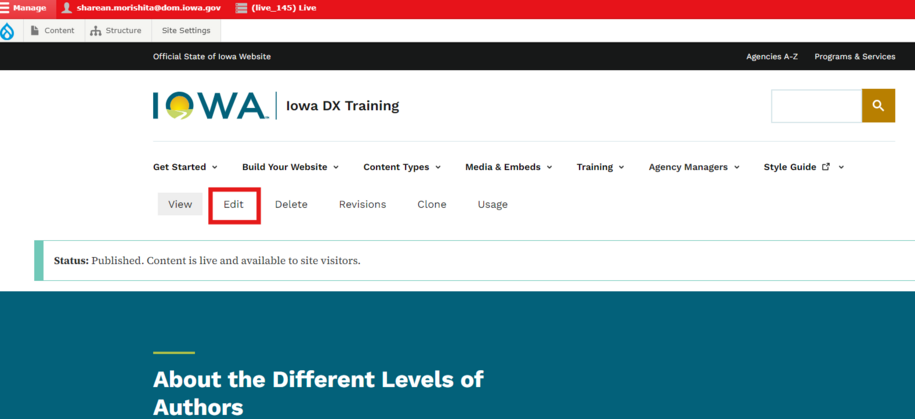Purpose
Google Search Console is a powerful tool. It shows you how people discover your website. Analyzing search queries helps you improve your content. This attracts more visitors and boosts your website's indexing. As a result, you get better search engine rankings.
When to use Google Search Console
- Verify site ownership: Ownership verification means proving to Search Console that you your agency's website. A verified owner has the highest degree of permissions in Search Console.
- Identify Popular Search Queries: Discover the keywords people are using to find your website.
- Find Content Gaps: Identify topics that your audience cares about that aren't on your site yet.
- Update Outdated Content: Make sure your content is accurate. Find search terms that rank for a specific page. Then, update it with relevant answers or information.
- Improve Your Website's SEO: Boost your search engine rankings and get more organic traffic. Use popular search queries to inspire your content ideas.
- Index Your Website: Submit your website's sitemap to help Google discover and index your pages.
- Remove Content from Search Results: Use the Remove URLs tool to hide specific URLs from Google’s search results for a while. Submit your website's sitemap to help Google discover and index your pages.
Elements of Google Search Console
Domain Name Provider Verification: If you need help with verifying ownership of your site within Google Search Console, you can send a support ticket to the DX Networking team to add the CNAME format record to the domain provider's record list will help to prove domain ownership.
The CNAME record info that you need to send to support can be found from within the DNS Record pop up window that appears when you are trying to verify domain ownership inside of google search console.
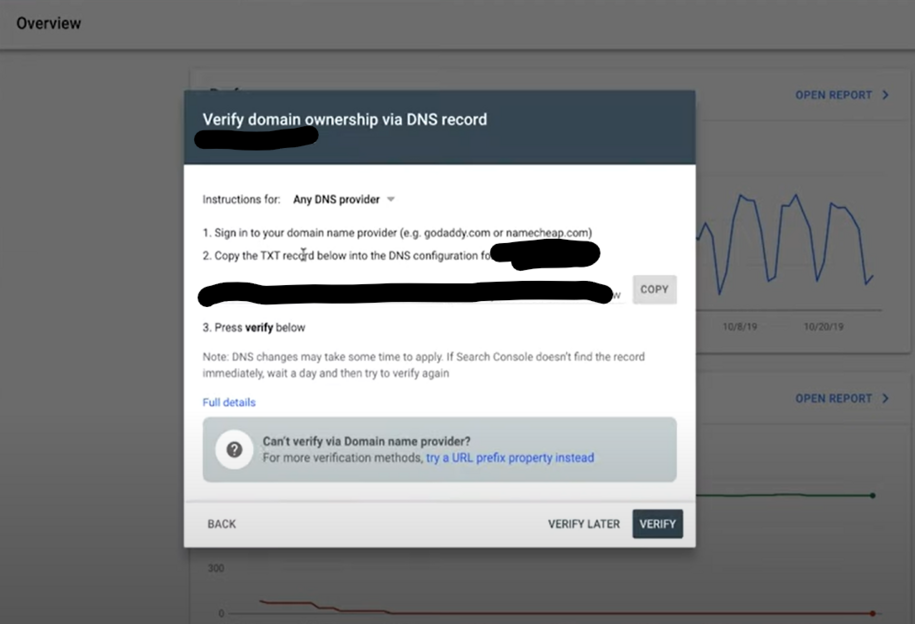
This verification process can take two or three days to start serving the record. If you have followed the process and the domain name provider verification fails, wait another day or two and try again or submit a support ticket.
- Removals: The Removals tool in Google Search Console allows you to temporarily remove specific URLs from Google Search results. This tool helps you hide old content or pages from search results temporarily.
This is just a temporary fix. The URLs will show up in search results again if they’re still on your website. To remove permanently, delete the content from your website.
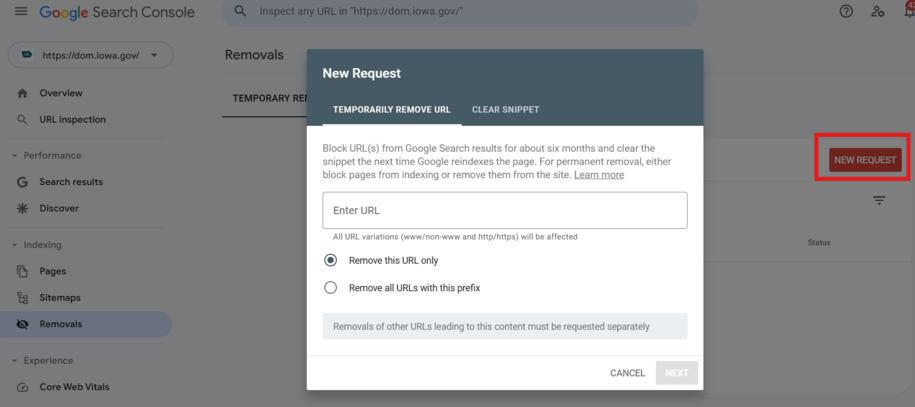
Google Search Console sitemaps
A sitemap acts as a roadmap for search engines, helping them crawl your site to improve your overall SEO (Search Engine Optimization) and improve your search rankings. It helps ensure that search engines can find all your pages and notice when content has been changed, added, or removed.
If your site's pages are properly linked, Google can usually discover most of your site. Proper linking means that all pages can be reached through the navigation. As an additional step for support, all of the sites on the DX and Marketing Platform have sitemaps which you can submit through Google Search Console to improve the crawling of your website.
How to submit a sitemap
To add or refresh your site map, especially after adding new content or removing content, go to your Google Search Console. In the upper left corner, select your website from the dropdown menu.
Select the Sitemaps link on the left-hand navigation. In the Add a new sitemap section, type sitemap.xml after your domain. Select Submit. This will tell Google to re-crawl and re-index your site.
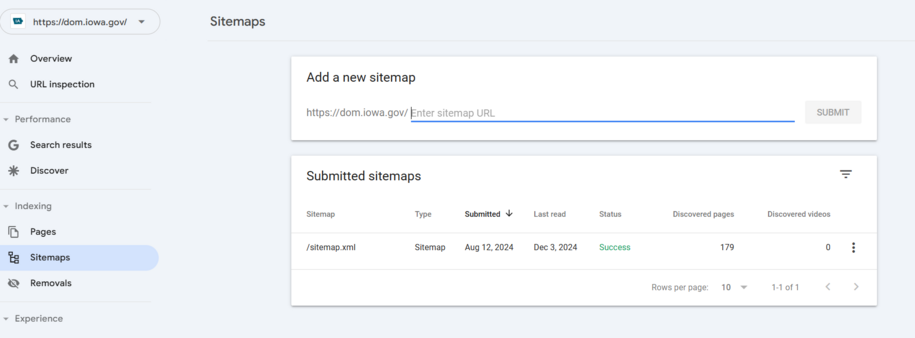
Search results
- Search Results: The Search Results section is like a window into what people are searching for when they land on your site. You can also use the Add filter button to search for a specific URL. Here's what it shows:
- Search Queries: These are the words people type into Google to find your site.
- Clicks: How many times people clicked on your website from Google Search.
- Impressions: How often your website appeared in Google Search results.
By understanding these search queries, you can improve your website's content to match what people are looking for. This can help your website rank higher in search results and attract more visitors.
Pages
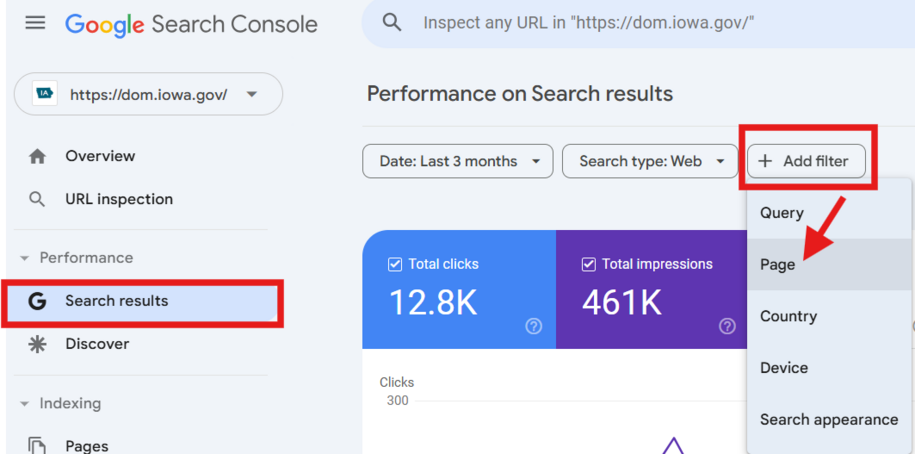
- Pages: The Pages section in Google Search Console is like a report card for your website. It shows how well Google understands and indexes your pages. It helps you understand:
- Indexed Pages: These are the pages that Google has found and added to its search results.
- Excluded Pages: These are pages that Google hasn't added to its search results.
- 404 Error Pages: These are pages that have broken links and that have returned errors, such as 404 Not Found.
By checking this section, you can make sure Google is seeing the right pages and fixing any problems that might be keeping your website from showing up in search results.

URL Inspect
URL Inspect: The URL Inspection Tool in Google Search Console is like a magnifying glass that lets you check a specific page on your website to see how Google sees it. You can use it to:
- Check Indexing Status: See if Google has indexed your page.
- Find and Fix Errors: Identify any issues that might be preventing your page from ranking well.
- Request Indexing: Ask Google to crawl and index a specific page.
- Referring Page: The Referring Page in the URL Inspection tool shows the page where Google first discovered your URL. It's essentially the source of the link that led Google to your page. Keep in mind that this isn't necessarily the most recent or important backlink. It's simply the page where Google first encountered your URL.

Identify content gaps and update outdated information
- Identify Missing Topics: Find keywords related to your page that you haven't covered yet. Use the search queries that have high impressions and low clicks.
- Refresh Old Content: Add new sections or paragraphs to your content. This helps update old information and cover these keywords.
- Improve Readability: Create clear and simple content. Be sure to include keywords in your page titles, headings, and text.
For example:
If your page on Standard Work Template shows many impressions but few clicks for the query standard work, consider making changes.

How to use Google Search Console to review and improve outdated content
Start by reviewing your Outdated Content page. Check if it has relevant keywords and search queries in the header and paragraph sections.
If it doesn't, use those search queries. Add them to the page in the heading and body text. For example, when we check the Standard Work Template page in Google Search Console, it shows high impressions for the search query Standard work. However, the clicks are low.
We can add the words Standard work to the heading when we visit the page directly. You can also add another section to this page. It can share more relevant information about the search query.
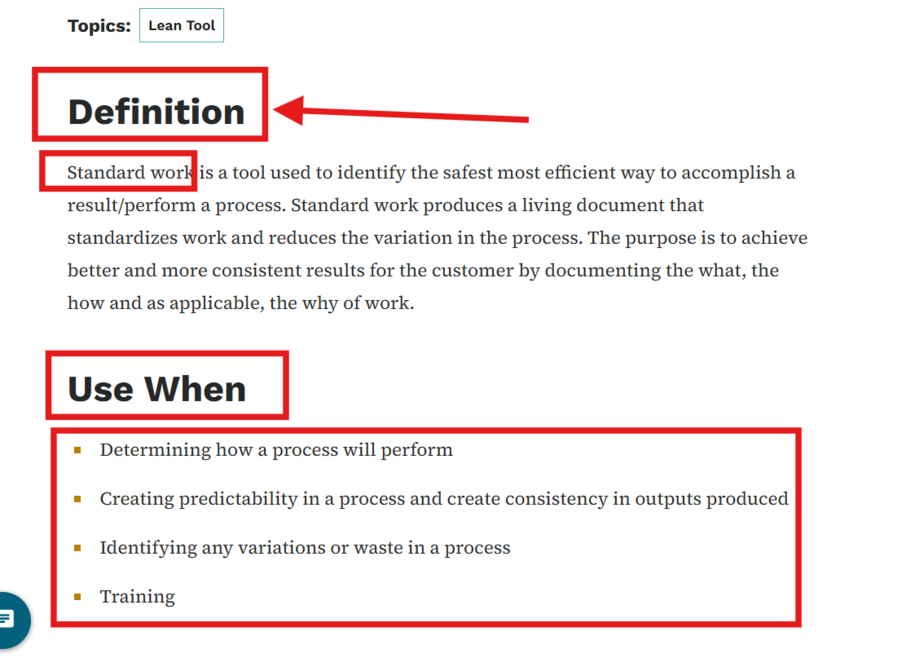
Use Google Search Console and these tips to refresh your old content. Make it relevant to what your audience is searching for. This way, you can improve your search engine rankings.
How to update outdated content
Using user data that Google Search Console provides is a great way to update any outdated content that is on your site.
Go to the Performance tab in Google Search Console and use the Search Results section.
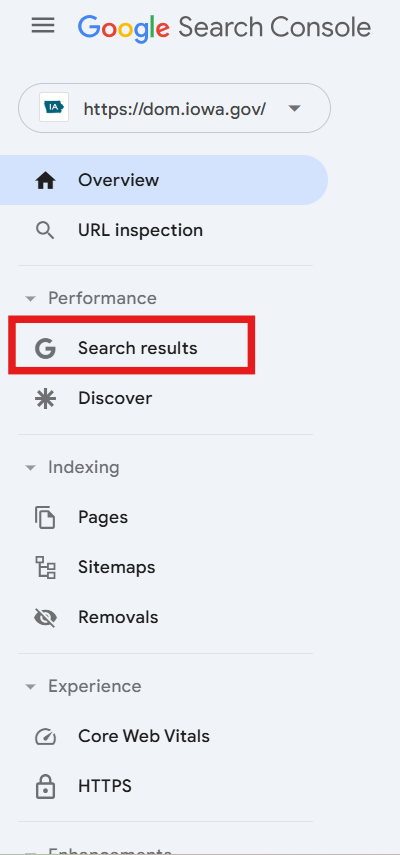
- Click the Add Filter button. Then choose Pages to enter the exact URL of the page you want to analyze. This is how you can find the search terms that are being used by Google users to find that page.

- Check the Search Queries section. Find search queries with high impressions but low clicks. These keywords can help you update your outdated content. Low clicks suggest the page might not answer a specific question users have about this search query.

Now that you have your search term, go to the edit section of your page. You can add a new section that includes any relevant information about that term.
How to edit a page
To find the content pages you want to edit, click the Content button.

Clicking the Content button opens the Content library. Here you'll see all the pages that you and your team have added to the site.
To find the page you want to edit, use the search field. Type in the page name. You can also sort pages by using the content type filter.
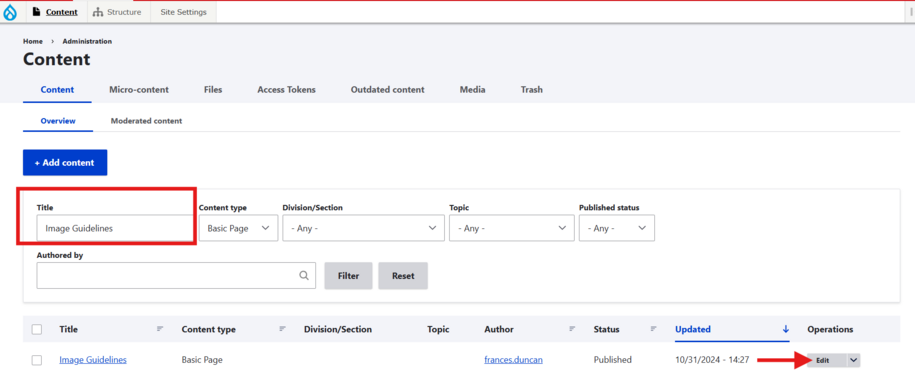
In the content library, click the Edit button on the page you want to edit.
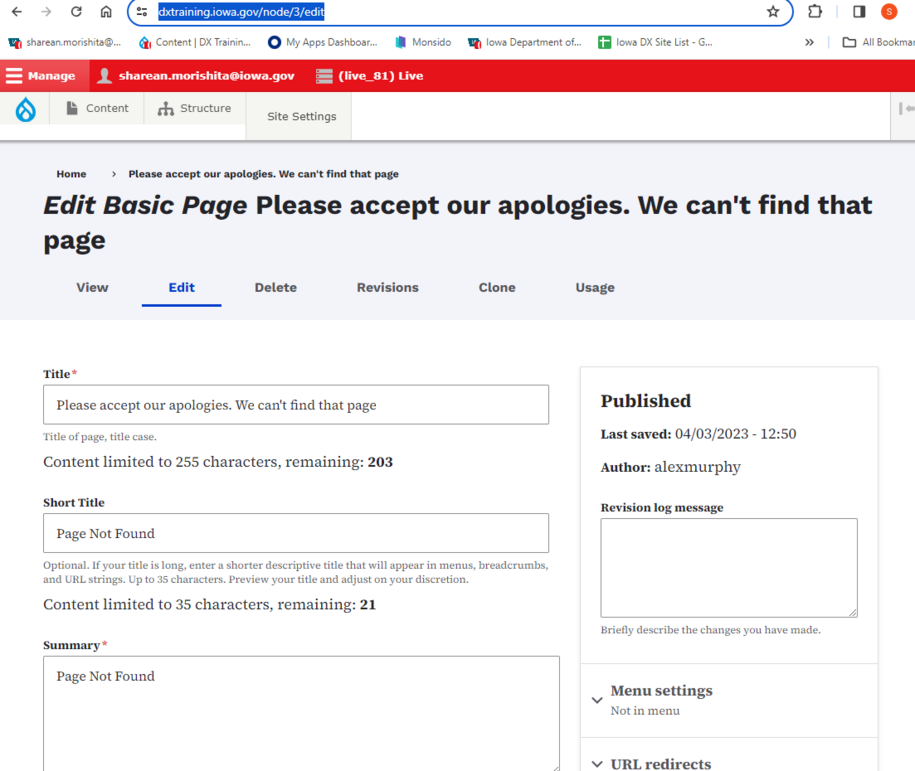
You can edit a page if you have its URL. Just go to the page you want to update. Then, click the Edit button above the title.
